Silent Service is a good game. It is the next step for the continuously innovating Microprose. A submarine simulation, first released in early 1986 on the 8-bit platforms, later that year or early next year it was ported to the 16-bit platforms.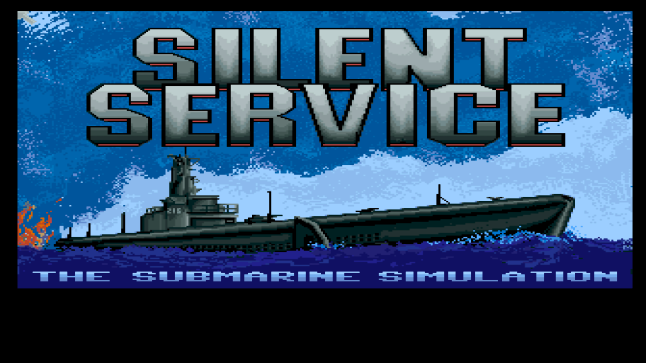
The game is a continuation of ideas of the earlier flight sims produced by the company with a huge number of new features added.
The first thing is that the game offer more mission types than F-15 Strike Eagle. There are practice missions against old cargo ships. The second type of missions are the most reminiscent of the former flight simulation missions. On a small map a fixed situation is played out. The best though, is the third type of missions: War Patrols.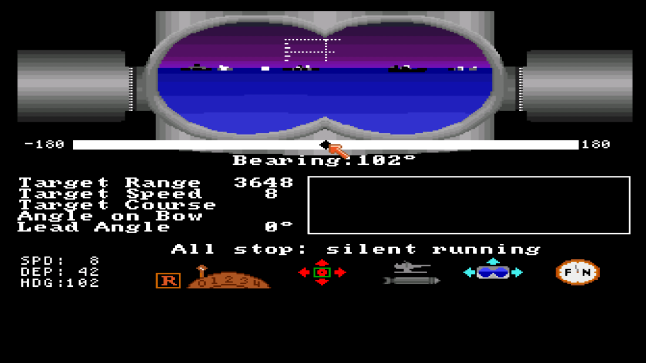
The War Patrols are the meat of the game. The difficulty can be set on a variety of levels, just like with modern simulators. There is possibility to turn off and on dud torpedos, convoy zig-zag and five other realism options. Apart from these options, also a general difficulty level can be chosen which affects the number and type of opponents.
Moreover, there is also possibility to choose a scenario, the type of the scenario changes the ship type and again, the type of enemies are also changed. Early in the war, it is easy to find lonely convoys, while later in the war, there are no dud torpedo and fully electrical torpedoes become a reality.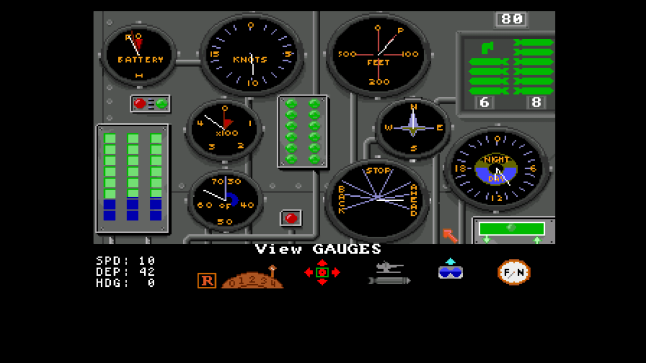
The War Patrols are played out over a map of the Pacific. The player starts from one of the US ports and drives a cursor over the ocean. There is fuel for more than 50 days of patrol, but the player won’t use up all the fuel necessarily. If things are good, the player might run out of torpedo before the sortie is over. If the player is unlucky, and port only repairs are on, most probably an early repair will be necessary.
When there is an engagement with the enemy, the screen starts flashing and the tactical map loads. This is the point where the player can learn all the details of a submarine. At least all the details an 8-bit machine can convey from a submarine.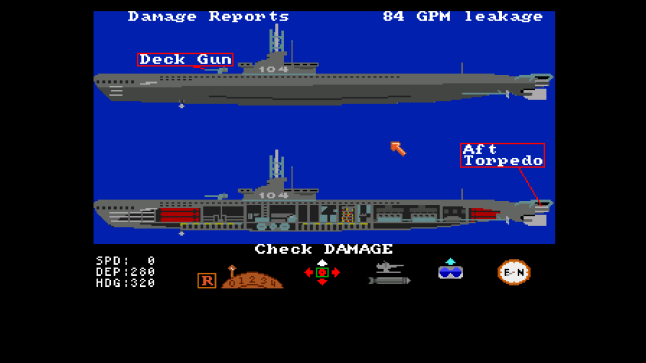
This is a very light simulator, quite easy to learn to control the sub, the difficulty comes from the chasing destroyers.
Though the systems are modeled in a very simple way, it is still the basic of every sub simulator since then. There is a general instrument panel and a general damage panel. There is the periscope/gun view and the player can get out to the top of the sail. There is day-night simulation, with the periscope unusable at night. The navigation is helped with the radar, and the sound of the sonar, but these are not explicitly showed in the game.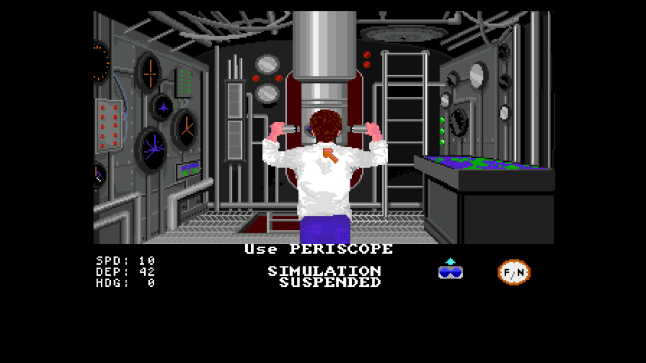
The graphics are clearly into the 8-bit world, the 16-bit machines would produce much better submarine sims later on. Even the 8-bit versions are quite clear though, but it is in the later generation where the game truly shines. With the Amiga and the Atari there is mouse support, the graphics are slightly more detailed.
The game difficulty is challenging, and the manual tries to help in figuring out the best tactics. The manual is not as big as the manuals of the early 90s, but it is rich in knowledge. It provides historical description of subs and sub tactics and the good thing is that these historical tactics work in the game. The game is a very good recreation of the sub combat of those ages, there are still many things missing that newer simulators would provide, but this game could be even today a good starting point.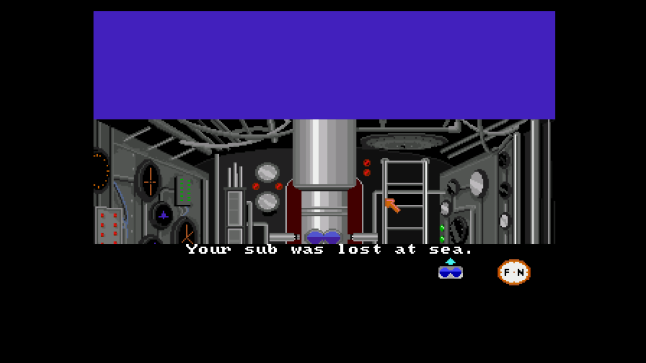
Microprose did it again, it pushed the boundaries of gaming further.